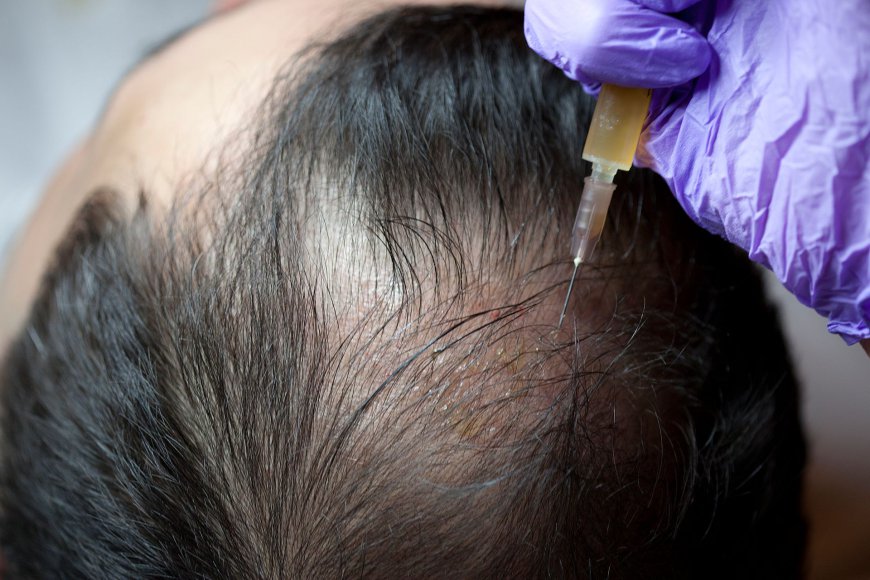PRP Hair Therapy: What to Know Before Getting Started

Hair loss is a common concern for many individuals, regardless of age or gender. While various treatments exist, PRP Hair Therapy Cost in Dubai has gained considerable attention in recent years as a promising solution for those struggling with thinning hair or baldness. If you’re considering PRP therapy, here’s what you need to know before getting started.
Understanding PRP Therapy
PRP therapy is a non-surgical treatment that utilizes your body's own platelets to stimulate hair growth. The process begins with a blood draw, typically from your arm. This blood is then placed in a centrifuge, which spins the blood at high speeds to separate the plasma and platelets from other components like red and white blood cells. The resulting PRP is rich in growth factors that can help rejuvenate hair follicles and promote new hair growth.
How PRP Works
The growth factors found in PRP play a crucial role in hair restoration. When injected into the scalp, these growth factors help increase blood supply to the hair follicles, prolong the growth phase of hair, and potentially activate dormant hair follicles. This rejuvenation process can lead to thicker, healthier hair and improved overall scalp health.
The Benefits of PRP Therapy
-
Natural Treatment: Since PRP therapy uses your own blood, the risk of allergic reactions or complications is minimal. This makes it a safer option compared to some other hair restoration treatments.
-
Minimally Invasive: PRP therapy is a non-surgical procedure, meaning there is no need for extensive recovery time. Most patients can return to their daily activities immediately after treatment.
-
Effective for Various Types of Hair Loss: PRP therapy can be beneficial for both androgenetic alopecia (common hereditary hair loss) and other types of hair loss, such as alopecia areata.
-
Long-lasting Results: While individual results may vary, many patients report significant improvement in hair density and thickness after a series of PRP treatments.
What to Expect During the Procedure
Initial Consultation
Before starting PRP therapy, it’s essential to have a consultation with a qualified professional. During this visit, the practitioner will assess your hair loss condition, review your medical history, and discuss your treatment goals. They may also conduct a physical examination of your scalp and hair follicles to determine if you are a suitable candidate for the procedure.
The PRP Process
The actual PRP treatment typically lasts about 60 to 90 minutes and involves the following steps:
-
Blood Draw: A small amount of blood is drawn from your arm.
-
Centrifugation: The blood is processed in a centrifuge to separate the PRP from other blood components.
-
Preparation of the Scalp: Your scalp may be numbed with a local anesthetic to minimize discomfort during injections.
-
Injection of PRP: The PRP is injected into targeted areas of the scalp using a fine needle. The number of injections may vary depending on the extent of hair loss.
-
Post-Procedure Care: After the treatment, you may be advised to avoid strenuous activities, sun exposure, and certain hair products for a few days.
Recovery and Results
One of the advantages of PRP therapy is the quick recovery time. Most patients can return to their daily activities right after the procedure. However, some may experience mild swelling, tenderness, or redness at the injection sites, which usually subsides within a few hours to a few days.
Results from PRP therapy can vary, but many individuals start noticing improvements in hair thickness and density within three to six months after the initial treatment. A series of treatments is often recommended for optimal results, with sessions typically spaced four to six weeks apart.
Potential Risks and Considerations
While PRP therapy is generally safe, there are some potential side effects and considerations to keep in mind:
-
Mild Discomfort: As with any injection, you may experience some discomfort, swelling, or bruising at the injection sites.
-
Not Suitable for Everyone: Individuals with certain medical conditions, such as blood disorders or infections, may not be candidates for PRP therapy.
-
Variable Results: Results can vary widely from person to person, and not everyone will respond to PRP therapy in the same way.
-
Commitment to Treatment: Achieving the best results often requires multiple sessions, and maintenance treatments may be necessary to sustain hair growth.
Choosing the Right Provider
Selecting a qualified practitioner is crucial for the success of your PRP therapy. Look for someone with experience in hair restoration and a good understanding of the procedure. It’s also beneficial to read reviews and ask for before-and-after photos of previous patients to gauge their results.
Conclusion
PRP hair therapy is a promising option for those looking to combat hair loss naturally and effectively. By understanding the procedure, benefits, and potential risks, you can make an informed decision about whether PRP therapy is right for you. As with any medical treatment, consulting with a qualified professional is essential to determine your suitability and to ensure a safe and successful experience. If you’re ready to take the next step towards regaining your hair, PRP therapy could be the solution you’ve been searching for.
